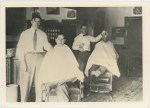[NOTE: I recommend you read this revised post on Anora instead: https://blackenedroots.com/blog/anora-a-fresh-look/.]
 In yesterday’s post, I investigated the birth family of my great-great-grandmother Mary Ann Horan. I learned that her parents were William and Anna (“Annie”) Horan. William Horan apparently disappeared (died? divorced?) around 1880. Annie Horan is listed on the federal census of 1880 as being the head of her household, while also marked as being married but not marked as being a widow.
In yesterday’s post, I investigated the birth family of my great-great-grandmother Mary Ann Horan. I learned that her parents were William and Anna (“Annie”) Horan. William Horan apparently disappeared (died? divorced?) around 1880. Annie Horan is listed on the federal census of 1880 as being the head of her household, while also marked as being married but not marked as being a widow.
Five years later, in 1885, Annie Horan also appears to have disappeared or died and her children appear to have been adopted a brother-in-law and next-door neighbor of Mary Horan, her husband’s older brother Francis (“Frank”) Marian Prettyman and his wife Anora Lee Prettyman.
When doing further research today into the mystery, I discovered a growing number of similarities between Anna Horan and Anora Lee Prettyman that make me now think that they were quite possibly the same person. If this is true, then my great-great-grandmother’s mother was also her sister-in-law! Continue reading





